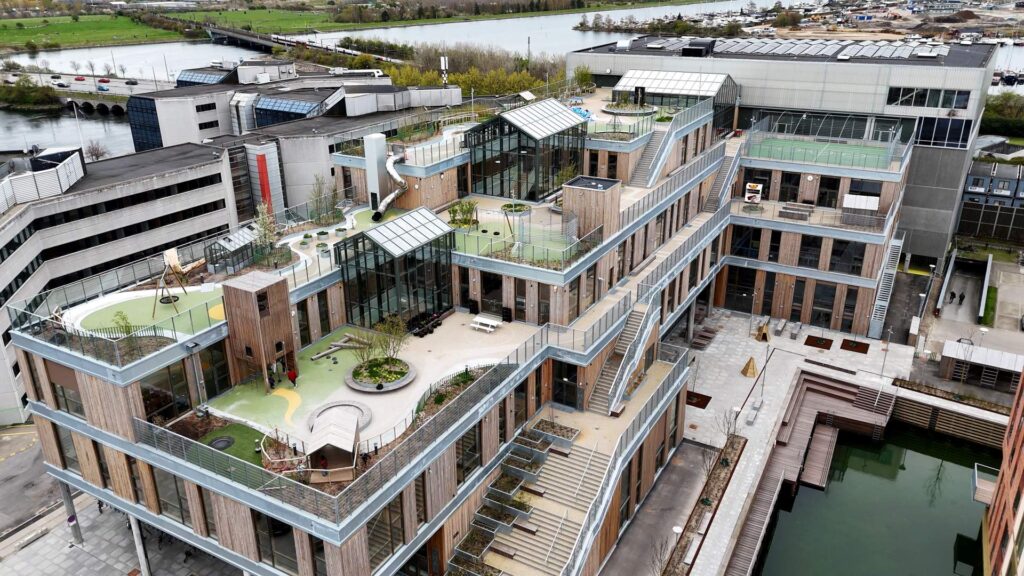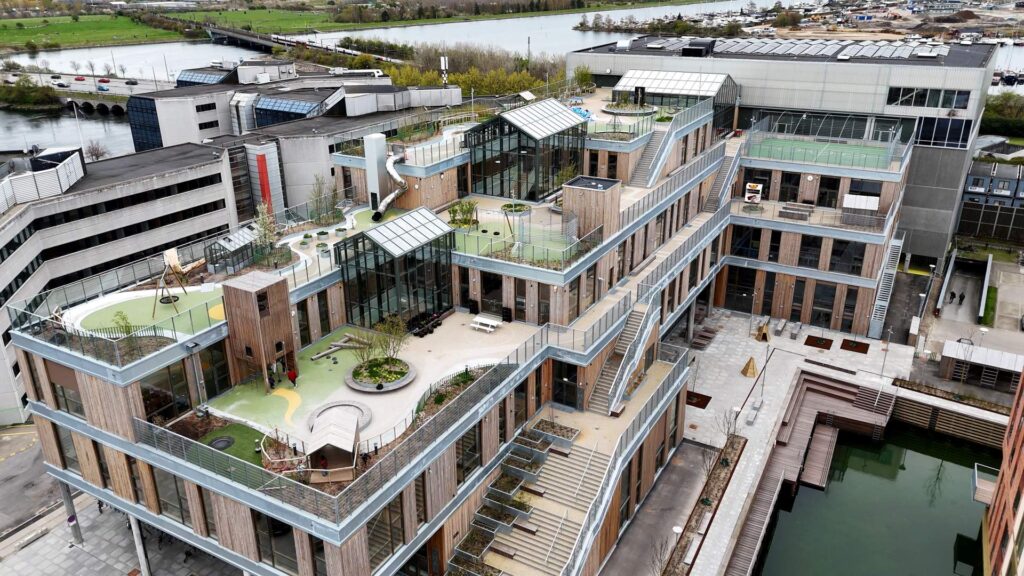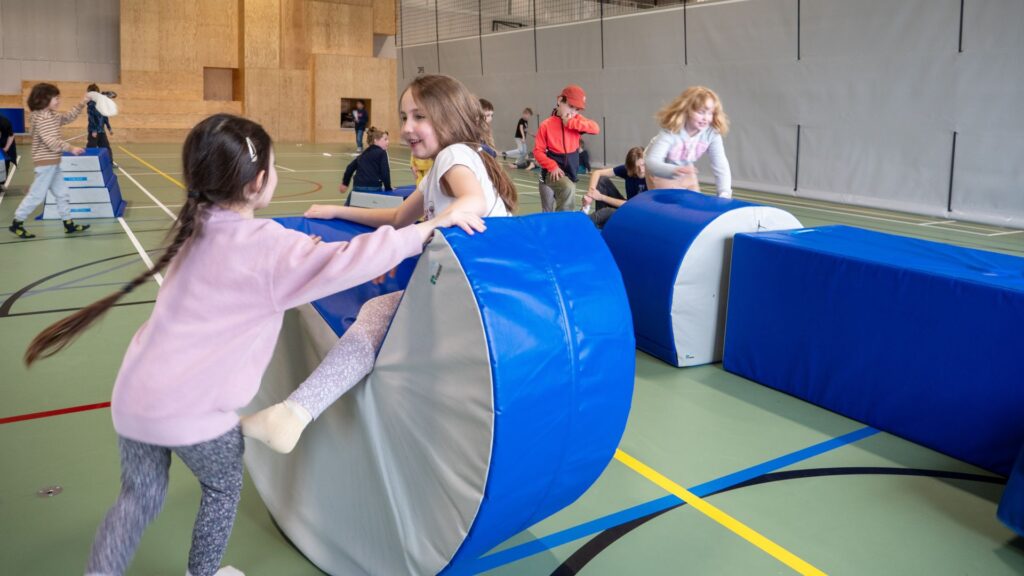
Many families move into newly built residential areas without established local networks, meaning opportunities for social life and physical activity are limited. This new initiative aims to strengthen social well‑being and local identity while encouraging physical activity in such districts. The project centres on new schools and their sports halls, which act as after-hours hubs where residents can connect through sport and community activities.

HOW IT WORKS
By keeping school sports halls open beyond school hours, communities are encouraged to create accessible spaces for children, adults, and families to engage in physical activities. This approach not only promotes health and well-being but also strengthens social connections within neighbourhoods. Collaboration among teachers, coaches, residents, and local authorities ensure that activities are inclusive, encouraging real social ties and a sense of belonging and community cohesion.
Children are the project’s initial focus, but the long-term ambition is to create inclusive meeting places that also welcome parents and other residents. By using sport and movement as common ground, the initiative provides both children and adults with the chance to build lasting social ties and a stronger sense of belonging.
Activities are developed in dialogue with residents, associations, and municipalities to reflect the needs of each neighbourhood. Everything is designed to be inclusive, low-threshold, and sustainable, so that active communities can thrive long after the project’s initial phase.

INSPIRATION TO ACTION
Led by DGI Copenhagen in partnership with Copenhagen Municipality and local stakeholders, the initiative, exemplifies how urban planning and community life can reinforce each other. By linking new schools, grassroots associations, and local residents, it showcases a strategy for promoting community involvement and enhancing well-being. Early results indicate that when schools and associations share facilities and collaborate closely, children become more active, parents more involved, and residents more likely to view the school as the heart of their neighbourhood.
This model offers valuable insights for cities worldwide aiming to promote active, inclusive communities in newly built neighbourhoods. By adopting a similar approach, other nations can create environments where both children and adults thrive through shared spaces and collaboration.
Further information is available here (in Danish)